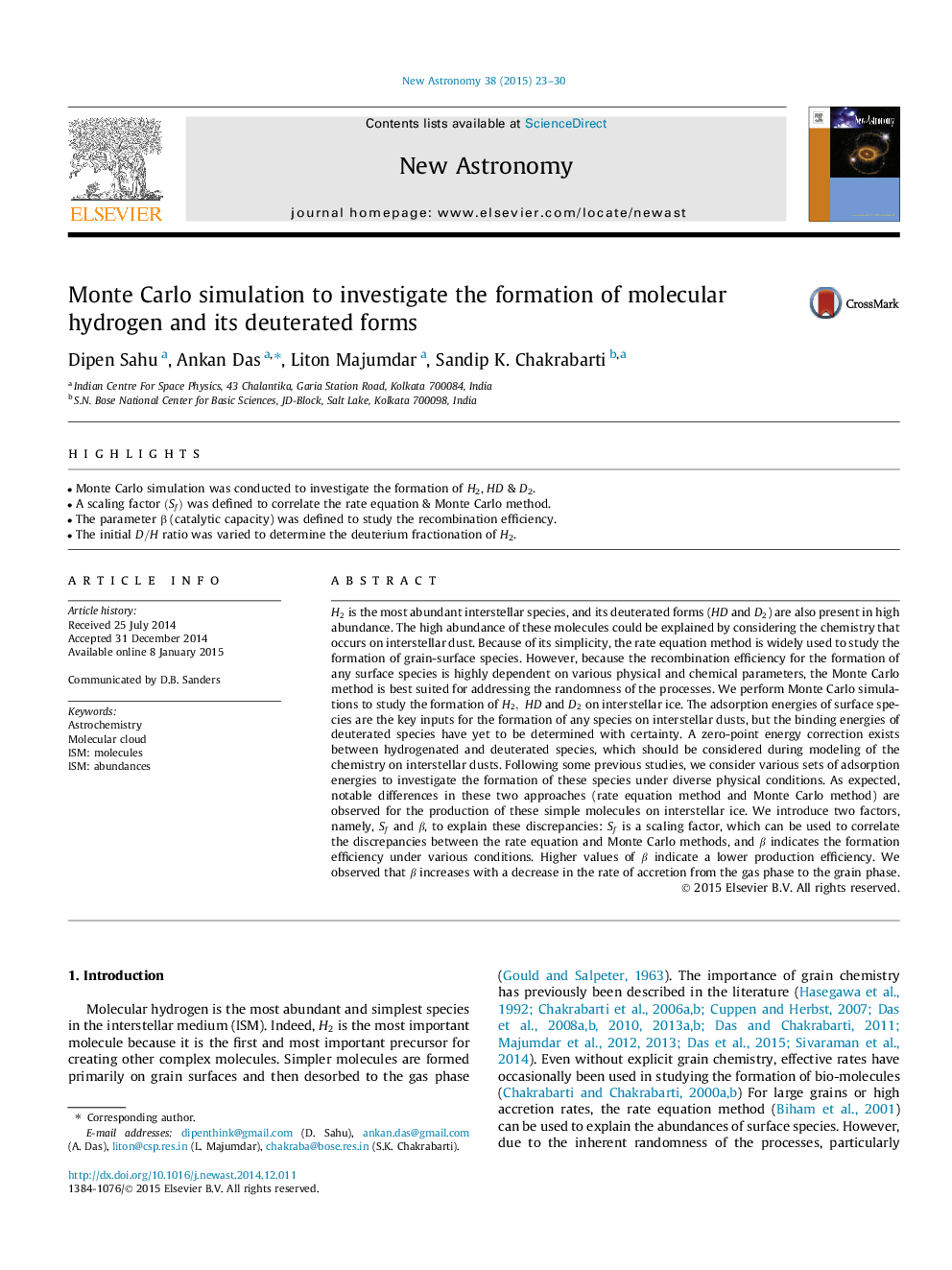| Article ID | Journal | Published Year | Pages | File Type |
|---|---|---|---|---|
| 1778912 | New Astronomy | 2015 | 8 Pages |
•Monte Carlo simulation was conducted to investigate the formation of H2, HD & D2.•A scaling factor (Sf)(Sf) was defined to correlate the rate equation & Monte Carlo method.•The parameter ββ (catalytic capacity) was defined to study the recombination efficiency.•The initial D/HD/H ratio was varied to determine the deuterium fractionation of H2.
H2H2 is the most abundant interstellar species, and its deuterated forms (HD and D2D2) are also present in high abundance. The high abundance of these molecules could be explained by considering the chemistry that occurs on interstellar dust. Because of its simplicity, the rate equation method is widely used to study the formation of grain-surface species. However, because the recombination efficiency for the formation of any surface species is highly dependent on various physical and chemical parameters, the Monte Carlo method is best suited for addressing the randomness of the processes. We perform Monte Carlo simulations to study the formation of H2,HD and D2D2 on interstellar ice. The adsorption energies of surface species are the key inputs for the formation of any species on interstellar dusts, but the binding energies of deuterated species have yet to be determined with certainty. A zero-point energy correction exists between hydrogenated and deuterated species, which should be considered during modeling of the chemistry on interstellar dusts. Following some previous studies, we consider various sets of adsorption energies to investigate the formation of these species under diverse physical conditions. As expected, notable differences in these two approaches (rate equation method and Monte Carlo method) are observed for the production of these simple molecules on interstellar ice. We introduce two factors, namely, SfSf and ββ, to explain these discrepancies: SfSf is a scaling factor, which can be used to correlate the discrepancies between the rate equation and Monte Carlo methods, and ββ indicates the formation efficiency under various conditions. Higher values of ββ indicate a lower production efficiency. We observed that ββ increases with a decrease in the rate of accretion from the gas phase to the grain phase.
